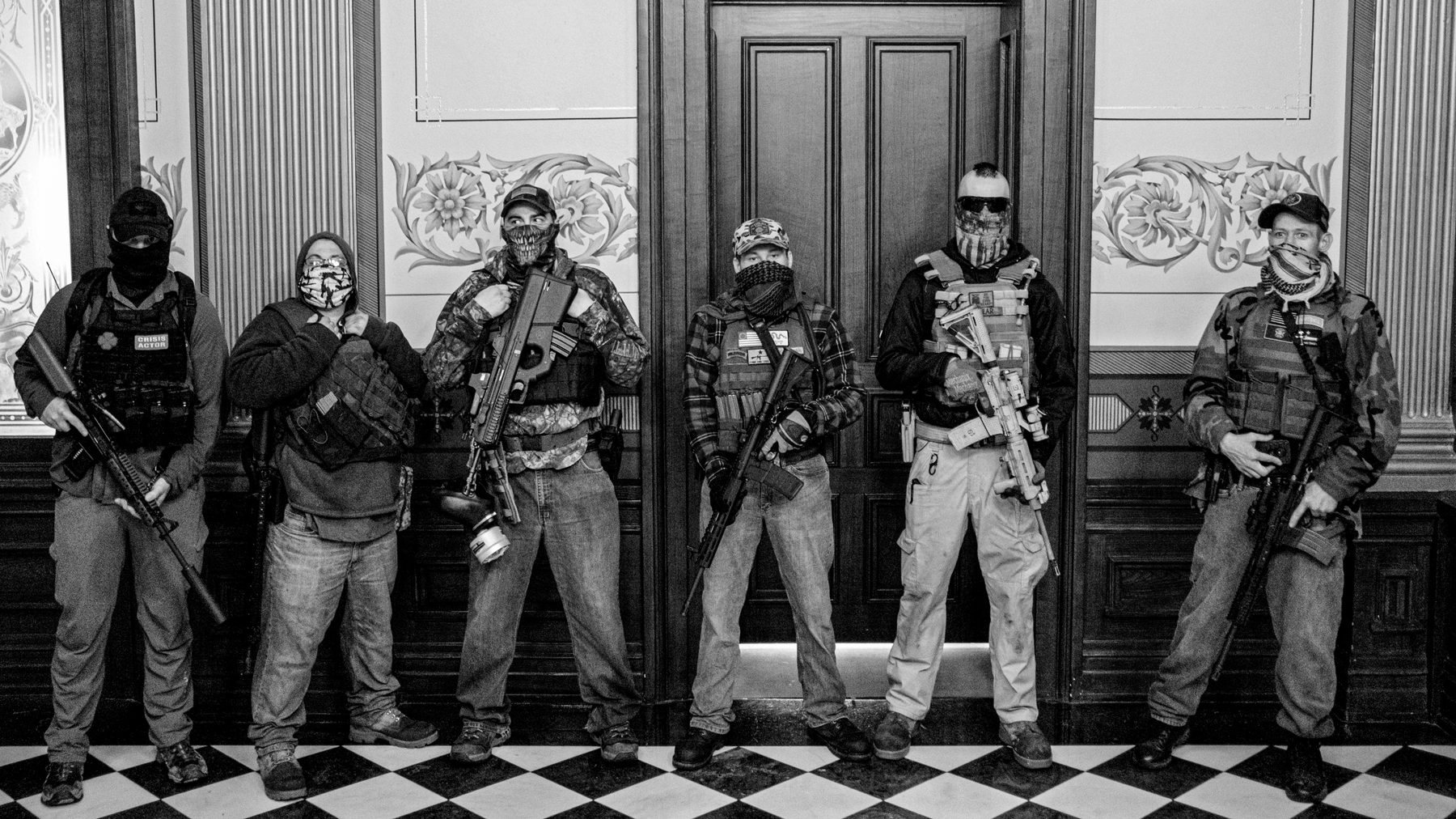A perfect storm of events fueled the antigovernment extremist movement in 2020, as COVID-19 restrictions, Black Lives Matter protests and the false conspiracy theories about the presidential election galvanized far-right militias and stoked extremist violence, according to a new analysis released by the Southern Poverty Law Center this week.
In The Year in Antigovernment Extremism report, the SPLC identifies 566 antigovernment groups that were active in 2020. The analysis is the second in a three-part series of the Year in Hate and Extremism report.
The number of antigovernment groups was slightly down from the 576 documented in 2019. But the movement was highly active.
In Michigan, members of the Wolverine Watchman group were indicted in a plot to kidnap the governor because they were angry over COVID-19 safety measures. In Ohio, a member of one group was charged in a plot to ambush and kidnap law enforcement officers. In Nevada, a Joint Terrorism Task Force charged three members of the Boogaloo movement, which wants to overthrow the government, with a conspiracy to use a bombing to disrupt Black Lives Matter (BLM) protests.
And in Washington, antigovernment extremists led the Jan. 6 attack on the U.S. Capitol that left five people dead.
“The antigovernment threat is likely to grow even worse in the months ahead, with the real possibility of new acts of domestic terrorism in response to Donald Trump’s impeachment trial, new health and safety measures to combat COVID-19, and more,” said Margaret Huang, president and CEO of the SPLC.
Many groups that do not plot acts of terrorism still take part in activities dangerous to themselves and others by spreading conspiracy theories and misinformation about the coronavirus, downplaying the pandemic’s severity and disregarding public health guidelines designed to keep people safe.
During 2020, many antigovernment extremists attended large events without masks. They often carried weapons and wore military-style gear at protests and forced their way into government buildings, all in an attempt to defy the government and its policies.
Among the SPLC’s findings:
- In 2020, California had the highest number of antigovernment groups (51), followed by Ohio (31), and Texas (29).
- Some antigovernment groups initially expressed cautious support for protests against police brutality. However, President Trump’s denigration of the BLM movement and his use of force against it helped shift the antigovernment movement’s posture toward BLM from one of uneasy support to open antagonism.
- Antigovernment groups capitalized on the narrative that BLM protesters were domestic terrorists to justify vigilantism, a role right-wing militias have historically embraced in their attempts to circumvent the law.
- There were at least 50 instances where far-right extremists showed up to BLM rallies during the summer.
- Paramilitary groups also increased their activity in response to COVID-19 restrictions and the disputed 2020 elections.
- In addition to opposing the government from the outside, some prominent extremists are attempting to run for public office. For example, several leaders from Ammon Bundy’s new People’s Rights network – which wants governmental power to be used to protect the “righteous” against liberals, antifa, BLM activists and others – are running for office in an attempt to “become” the government. Members of the Oath Keepers also appear to be using this strategy at the local level.
- Self-proclaimed “constitutional sheriffs,” who believe sheriffs are the highest law enforcement authority in the country and are entitled to defy federal laws they deem unconstitutional, supported antigovernment groups by defying COVID-19 lockdowns and spreading lies about the 2020 election.
“Antigovernment groups fundamentally distrust the government and fuel lies and conspiracy theories that undermine its credibility,” said Susan Corke, director of the SPLC’s Intelligence Project. “These groups are often quick to resort to vigilantism when they believe the government is incapable of correcting a perceived injustice.”
The third and final installment the Year in Hate and Extremism report, which explores how extremists benefit from Big Tech and political violence in the white power movement, will be released on Feb. 16.
Photo by Reuters/Seth Herald



